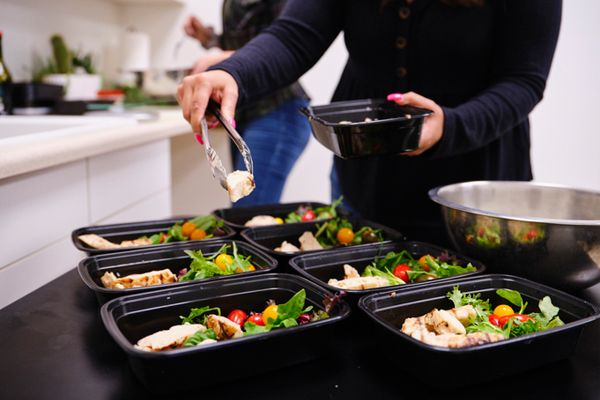Creating a balanced meal plan is a strategy for healthy weight loss. It emphasizes wholesome, nutrient-dense foods, helping you manage your calorie intake while supporting your body’s nutritional needs. By focusing on lean proteins, fiber-rich carbs, healthy fats, and portion control, you can build meals that satisfy hunger and maintain energy. Here’s how to structure your plan.
Prioritize Lean Protein Sources
Proteins are beneficial for weight loss because they help maintain muscle mass and keep you feeling fuller for a longer period of time. Choosing lean protein sources enables you to meet your daily protein needs while minimizing fat intake. Include proteins like chicken breast, turkey, egg whites, and tofu in your diet. These options are low in saturated fats while being rich in amino acids. For convenience, skinless poultry and fish, such as salmon or tuna, can be prepared in bulk. Diversify your choices with plant-based proteins, such as legumes or tempeh, if you prefer vegetarian options. Each serving of protein should align with your activity level and provide sufficient energy to sustain your goals.
Choose High-Fiber Carbohydrates
High-fiber carbohydrates are a beneficial component of a balanced meal plan, offering sustained energy while aiding digestion. Fiber helps you stay fuller for longer, which reduces the likelihood of overeating. Here are effective ways to incorporate them:
- Whole Grains: Select options like brown rice, quinoa, oats, or whole-wheat bread, which provide complex carbs and dietary fiber.
- Vegetables: Incorporate fiber-rich vegetables, such as broccoli, spinach, carrots, or kale, into every meal.
- Fruits: Apples, berries, pears, and bananas are excellent sources of fiber and natural sweetness.
- Legumes: Beans, lentils, and chickpeas are versatile and nutrient-dense, making them a great addition to salads, soups, or as a side dish.
Incorporate Healthy Fats Daily
Healthy fats are beneficial for your body’s functioning and can make meals more satisfying when included in moderation, ensuring you maintain a balanced diet without cutting too many calories. Focus on sources like avocados, nuts, seeds, and olive oil, which provide monounsaturated and polyunsaturated fats. Adding small amounts of fatty fish, such as salmon or mackerel, supplies omega-3 fatty acids that support overall health. To avoid excess calories, measure serving sizes carefully—one tablespoon of olive oil or a handful of nuts can enhance both the flavor and nutritional value of your meals.
Watch Portion Sizes Closely
Even when choosing healthy foods, overeating can hinder your weight loss goals. Proper portion control can help you stay within your calorie limits. Here are some practical tips:
- Use Measured Servings: Measure grains like rice and pasta with a cup, ensuring each portion aligns with your goal.
- Visual Tools: You can use guides like “a serving of protein should be the size of your palm” to estimate portions effectively.
- Smaller Plates: Opt for smaller plates and bowls to avoid unintentionally over-serving food.
- Mindful Eating: Take your time during meals, letting your body register fullness before reaching for seconds.
- Pre-Portion Snacks: Instead of eating directly from a package, prepare single servings of healthy snacks in containers.
By implementing these strategies, you can manage your calorie intake without feeling deprived.
Commit to Lasting Weight Loss
Building a balanced meal plan is about making sustainable lifestyle changes, not quick fixes. Focus on long-term habits by prioritizing protein, fiber, healthy fats, and portion control while avoiding restrictive diets that lead to burnout. Consistency in preparation, portion control, and eating habits will help you achieve lasting weight management. Start making practical, nourishing choices today for a healthier future, and reach out to a weight loss specialist if you have any questions.








Leave a Reply